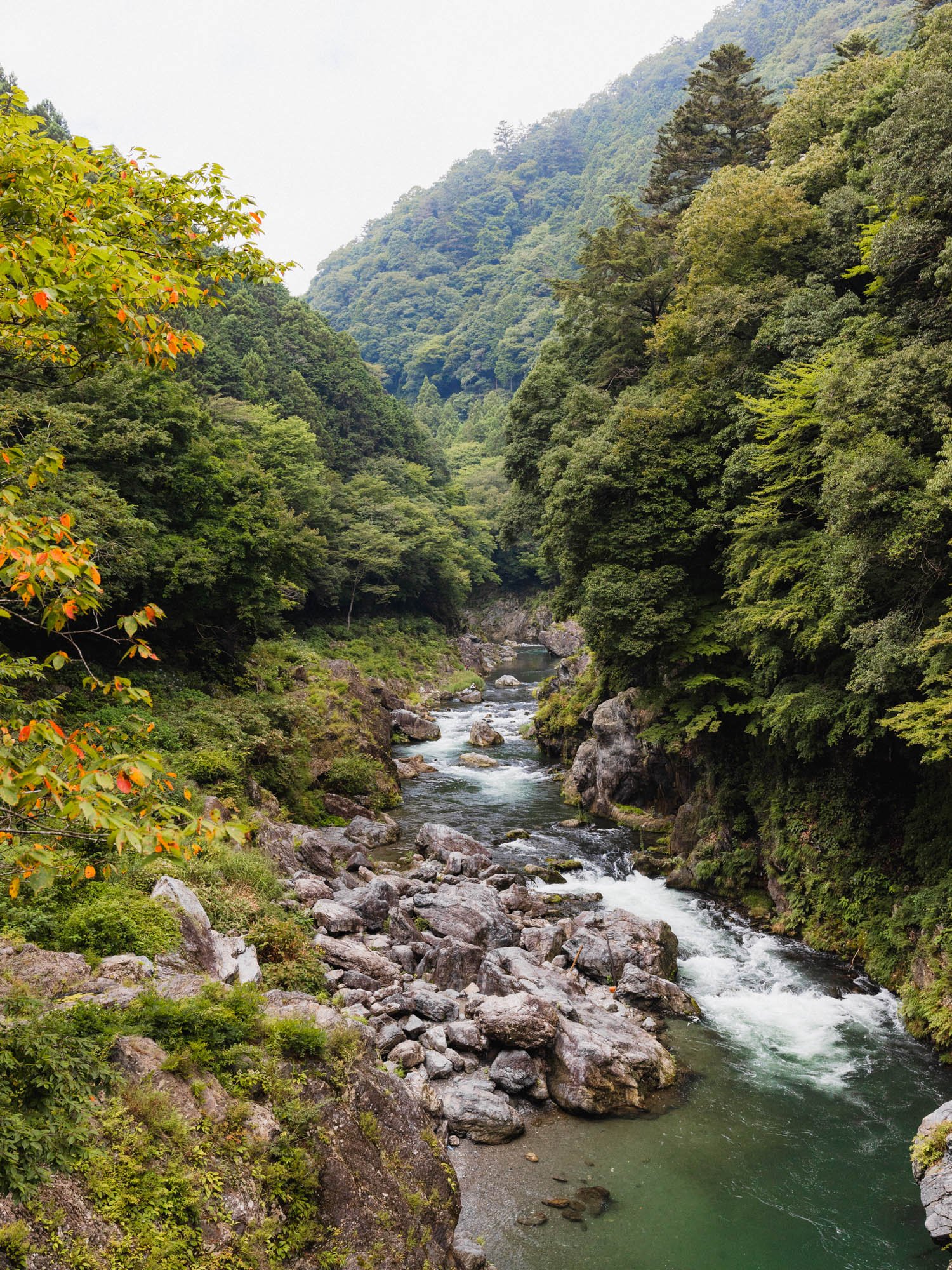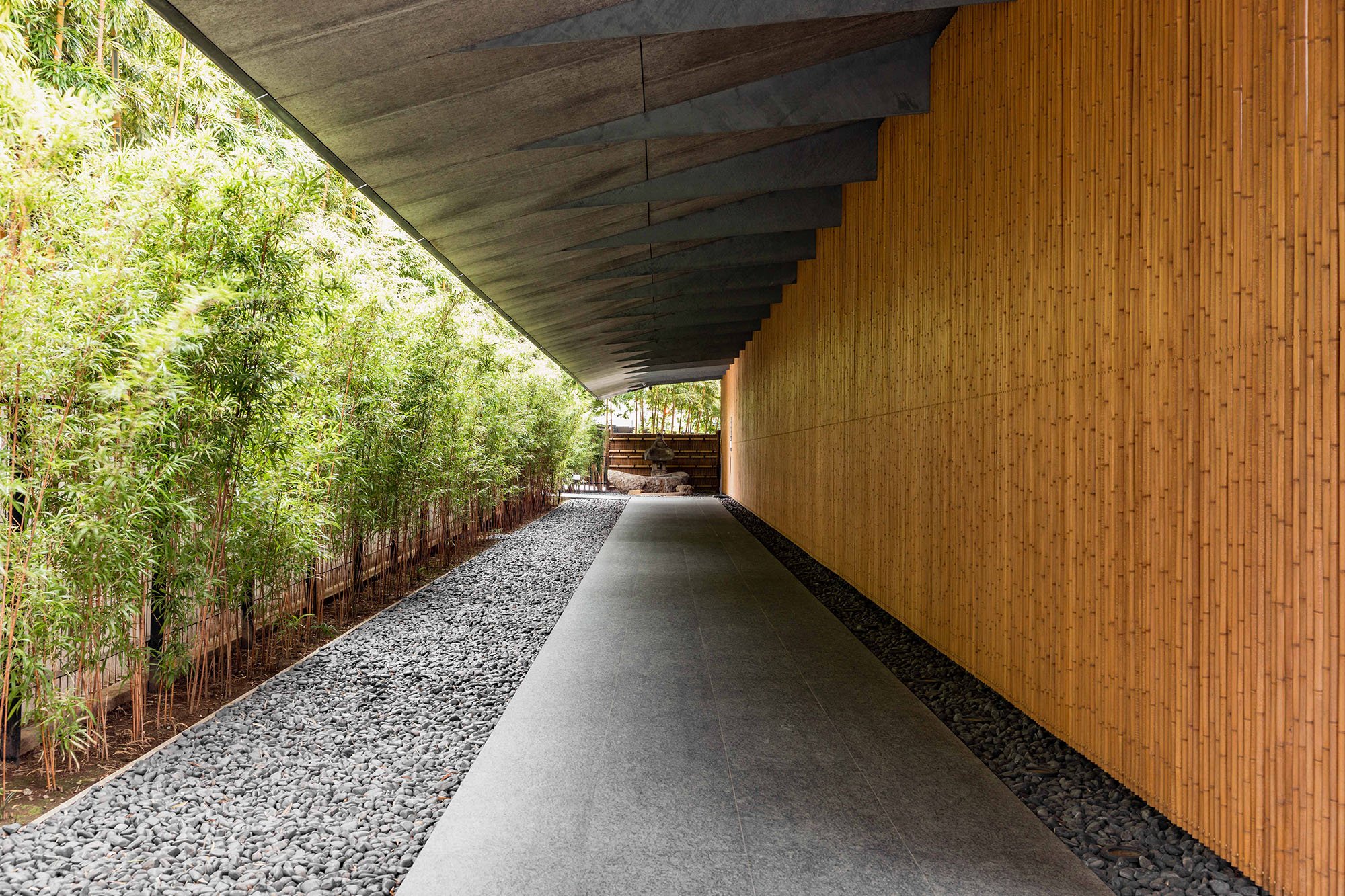Contemporary Design Meets Traditional Art at Nezu Museum, Tokyo
Japan is a country that provides countless options for those who love art, design, and history. From the UPOPOY National Ainu Museum in Hokkaido to Echigo-Tsumari Art Field, and the entire prefecture of Aomori, you’ll be spoilt for choice. If you’re spending a few days in the capital, one place high on the list to visit for those who appreciate art and design is the Nezu Museum. With a large selection of pre-modern Asian art, a serene oasis-like garden hiding out the back, and the NEZUCAFÉ that offers traditional tea ceremonies, Tokyo’s easily accessible Nezu Museum is well worth the trip.
Interested in planning your trip around it? Check out this Ultimate Japan itinerary for first-timers.
Architecture & Design
There are many places in Japan to visit for Art & Architecture, and the Nezu Museum in Tokyo is one of them. Designed by renowned architect Kengo Kuma, the space at Tokyo’s Nezu Museum has an almost symbiotic relationship with the displays to ensure visitors have the best viewing experience possible. The semi-covered grey stone entrance to the museum is flanked on either side by rows of bamboo, a precursor to the blend of architecture and nature throughout the building.
Upon entering, you’ll be greeted with over 40,000 sqft of space dedicated to showcasing the museum’s centuries-spanning collection. The clever use of glass, steel, sandstone, concrete and wood means that although the space is large and airy, viewing the work is an intimate and personal experience. Specific features such as the glass walls and large windows present throughout the museum have been intentionally designed and placed to work in harmony with the displays while inviting the natural world and light inside. Just enough to improve the ambience, not too much to be distracting.
Discover more about Nezu Museum and hundreds of other unique destinations in my brand new guidebook, Views from Japan.
Collection
If you’re looking for a place to visit in Japan for traditional crafts, the collection at Nezu Museum in Tokyo won’t disappoint. The main bulk of items consists of calligraphy, painting, sculptures, metalwork, ceramics, lacquer, wood and bamboo, textiles, and archaeological materials with the bulk of this attributed to the private collection of Nezu Kaichirō, Japan’s Tobu Railway president. Kaichirō was an enthusiastic collector who wished to share his enjoyment with the general public and after his death, Kaichirō Jr established a foundation to preserve the collection in 1940 at the museum’s current site.
The Nezu Museum houses over 7,400 individual pre-modern Japanese and East Asian art including seven designated as National Treasures, ninety-one as important cultural properties, and ninety-five registered as important art objects. Handscrolls from the 8th century showcasing the rules and regulations for governing priests and paintings of Nachi waterfall both fall in the former category.
Of particular note are the ancient Chinese bronzes, a world-renowned collection strong in the late Shang Dynasty (17th to 11th centuries BC).
Related Post: Escape the City: 6 Easy Day Trips from Tokyo.
The Garden & Cafe
Tokyo is filled with interesting and unique cafes, especially in some of the lesser-known neighbourhoods, but the onsite NEZUCAFÉ is definitely worth making the stop for. Visitors can order tea sets (matcha and a sweet treat or cake) and have their very own tea ceremony in a more casual setting than usual. You’ll also be presented with incredible views of the 17,000ft sqm Japanese garden.
Much of the original garden burned down during the bombing of Tokyo in World War II, but since then it’s been slowly restored. The goal behind this is for visitors to explore the works of art in the main building, and enjoy the changing of season in the garden afterwards. There are a number of highlights worth checking out in the garden from the rustic tea houses like Kōnintei and Hikinsai, to the bamboo grove by Yakushidō, the Higashi Kumano Waterfall, and Mt. Potalaka. If you’re looking for a way to decompress for a couple of hours from Tokyo, this is it.
Looking for travel guides and itineraries? Subscribe to the weekly Views from Japan newsletter here.
Tricks & Tips
Arrive early - while the museum is rarely overcrowded, avoiding the busy hours will make for a more relaxed experience.
Visiting on weekdays for a less busy experience, Monday is the only day it’s closed.
Book your tickets online if you’re looking to save money (¥100) for both the museum collection exhibition and the special exhibition.
Make sure you’re in no rush to view the gardens afterwards, people often visit for this reason alone
Check out which special exhibitions are running during your trip and plan your visit accordingly.
Important Information
Opening Hours: 10 am to 5 pm
Pets Allowed: No
Entry Price: ¥1600 same-day ticket to the special exhibition, ¥1400 same-day ticket to the museum collection exhibition
Parking: 9 spaces including
Access: 8-minute walk from Omotesando station (Exit A5)
Discover Japan, Minus the Crowds.
Are you tired of seeing the same over-crowded locations in Japan? I want to offer you a more meaningful experience; one that inspires you to travel to lesser-known destinations and explore Japan’s unique cultural experiences. Views from Japan is a brand new travel guidebook packed with over 260 unique experiences and timeless destinations, giving you all the tools so that you can create a once-in-a-lifetime Japan itinerary.














